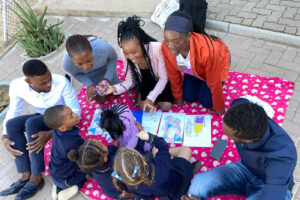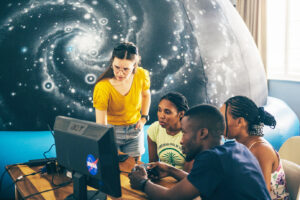The ability for people to perform optimally, and students in particular, remains a common concern for researchers and academics. Learned helplessness is a phenomenon discovered by Seligman and Maier. Learned helplessness occurs in humans and animals after being conditioned to expect pain, discomfort, or suffering without the possibility to “escape”. This means that at times people and animals believe that they are unable to control the situation and whatever they do, they have no control over the outcome. These thoughts and feelings influence the way they behave (learned helplessness). At times, the subject has no control or believe that they have no control. Some symptoms of learned helplessness include feeling a lack of control, failing to ask for help, low self-esteem, decreased motivation, investing less effort into tasks, lack of persistence, and feelings of frustration.
Dr Manfred Janik (Senior Clinical Psychology lecturer at UNAM) conducted research on first-year UNAM students and reported average levels of learned helplessness. He noted that learned helplessness is a common phenomenon amongst the “new youth”. Research found that learned helplessness is initiated by an education system that tries to “over-help”. “It is becoming very difficult to fail”, a former staff member noted. “It is the norm that in our department, for every assessment set, you need to prepare a make-up assessment for all students- with or without sick leave certificates” (UNAM lecturer). One of the first-year students noted that “the new examination system has its merits but I feel sorry for the lecturers having to mark examination scripts twice for students who failed to prepare adequately”.
When the CA marks are released, the departments/lecturers receive many complaints “the lecturer is too strict, does not listen to excuses, is too straightforward…”. It is interesting to note that these allegations are far from the truth, Dr Janik noted. As much as some lecturers are “less favored” by these students, some students are able to grow during their university years. “I have learned a lot not only about research but also perseverance, attention to detail, and the importance of pushing the boundaries of knowledge” (Final year research student). As part of the student-lecturer evaluation, one of the students noted that “Except for the content of the subject, I learned that I am capable of more than I think and that I can work well under pressure”.
Dr Janik noted that “the more we as educators do for our students to ‘help’ them, the more we render them helpless”. He continues by referring to the “extensive study guides, PowerPoint slides, providing notes to students and multiple-choice tests/examinations”. It seems like these “over-help initiatives” incapacitate the students. Research noted that educators/lecturers are solving more than half of the challenges for students. Students will be unable to develop critical thinking skills needed to function in the global economy. Students believe that the more questions they ask the lecturer, the sooner he/she will help them. One lecturer noted that at times, after lecturing for an hour, some students report that they “understood nothing” in an effort to be provided with the answer/s or the lecturer to repeat the entire lecture.
Some ways to overcome learned helplessness; reach out to get support or encouragement, explore where the learned helplessness is coming from, identify negative thoughts related to learned helplessness, replace negative thoughts and behaviour with more beneficial ones, improve self-esteem, or set goals and tasks to improve perceived competence. The question remains: what is your role as educator, lecturer, or administrator regarding the learned helplessness of students?
(Story contributed by: Dr Manfred Janik and Dr Wesley Pieters – Department of Psychology and Social Work; UNAM)





